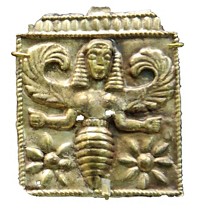Advertisement
Grab your lab coat. Let's get started
Welcome!
Welcome!
Create an account below to get 6 C&EN articles per month, receive newsletters and more - all free.
It seems this is your first time logging in online. Please enter the following information to continue.
As an ACS member you automatically get access to this site. All we need is few more details to create your reading experience.
Not you? Sign in with a different account.
Not you? Sign in with a different account.
ERROR 1
ERROR 1
ERROR 2
ERROR 2
ERROR 2
ERROR 2
ERROR 2
Password and Confirm password must match.
If you have an ACS member number, please enter it here so we can link this account to your membership. (optional)
ERROR 2
ACS values your privacy. By submitting your information, you are gaining access to C&EN and subscribing to our weekly newsletter. We use the information you provide to make your reading experience better, and we will never sell your data to third party members.
Education
Newscripts
Mummy Preservation, When Frankenstein Came To Life
by Alexander H. Tullo
October 30, 2011
| A version of this story appeared in
Volume 89, Issue 44
Alan Billis, a cabdriver from Torquay, England, is the first person in more than 3,000 years to be mummified using the exacting standards of 18th-dynasty Egyptian pharaohs.

Diagnosed with lung cancer, Billis read that Britain’s Channel 4 was looking for a volunteer with a terminal illness to be mummified after death for a documentary. “People have been leaving their bodies to science for years, and if people don’t volunteer for anything, nothing gets found out,” Billis remarks in the documentary, titled “Mummifying Alan: Egypt’s Last Secret.”
The cabdriver passed away in January. Stephen Buckley, a chemist and research fellow at the University of York, presided over his mummification. Buckley has long studied mummies using gas chromatography-mass spectrometry in an effort to duplicate the preservation process. Over the years, he has attempted to mummify some 200 pigs’ legs in a shed equipped with a space heater and dehumidifier to mimic Egypt’s climate.
The key to mummification is natron, a naturally occurring mixture of sodium carbonate decahydrate, baking soda, and sodium chloride. The connection between natron and mummies has long been known. The 5th-century-B.C. Greek historian Herodotus described the preservative being used to drain corpses of moisture.
Monster mash: Mummies and Frankenstein are more than just scary characters to some chemists and physicists.
For centuries, most people figured that the Egyptians covered the corpses with natron, similar to how fishermen preserve cod with salt. But Buckley, along with University of York archaeologist Joann Fletcher, observed flakes of salt on a number of mummies. Buckley says the flakes could only have been formed by a solution of natron.
So the chemist used the same technique on Billis. He coated the cabdriver’s body with beeswax and sesame oil to protect his skin from the caustic solution. Then Buckley immersed Billis’ body in a natron solution for about a month, dried it in a low-humidity chamber, and wrapped it in linen.
Forensic pathologists are impressed by the results, as is Billis’ wife, Jan. “I’m the only woman in the country who’s got a mummy for a husband,” she says.
Mary Shelley went one step further than Buckley: She reanimated a corpse using only her imagination.

And the inspiration for the writer’s novel “Frankenstein” is as legendary as the monster itself.
As the legend goes, in 1816, Shelley, then known as Mary Godwin, was summering at Villa Diodati on Switzerland’s Lake Geneva with her future husband, Percy Shelley; Lord Byron; and others. Lord Byron challenged each of the vacationers to write a scary story.
Days passed before Godwin could find her inspiration. But after listening to a late-night discussion between Shelley and Byron regarding “the nature of the principle of life,” Godwin retired to her room past the “witching hour,” according to an account she wrote in 1831. She soon had a waking dream: “With shut eyes, but acute mental vision—I saw the pale student of unhallowed arts kneeling beside the thing he had put together,” she wrote. The moon was shining through her window.
The moon is important, says Texas State University physics professor Donald Olson. Many historical accounts have Byron issuing the challenge on June 16, 1816, and Godwin starting to write on June 17. Another chronology has her beginning to write on June 22. But the problem is, Olson says, there was no moonlight on June 22.
Olson supposes that Byron issued the challenge when the group arrived at the villa on June 10, and Godwin started writing on June 16. Along with a team of researchers, the physicist went to Villa Diodati to use topographical measurements to see when the moon might have been visible from Godwin’s room. Turns out she could indeed have seen the moon on June 16 in the wee morning hours. Olson’s findings were published in the November issue of Sky & Telescope.





Join the conversation
Contact the reporter
Submit a Letter to the Editor for publication
Engage with us on Twitter